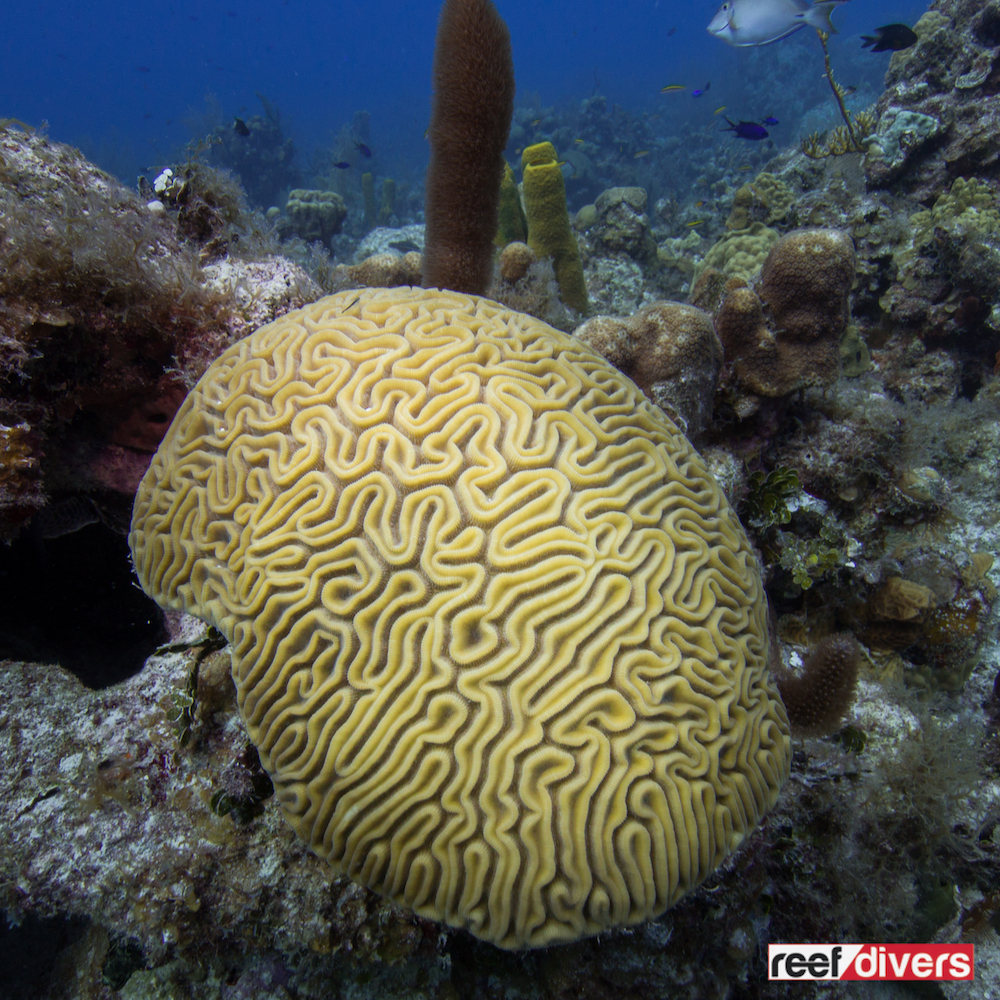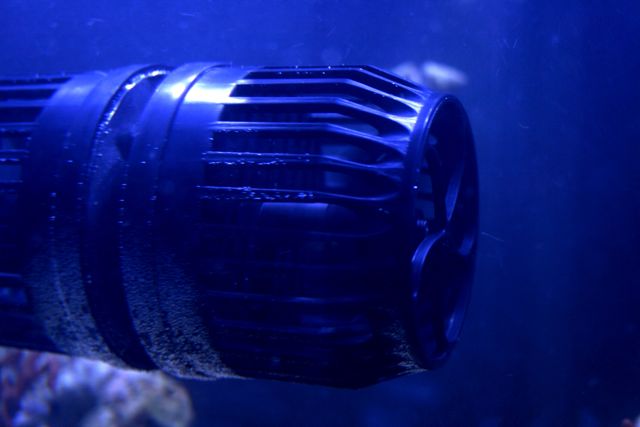Diploria labyrinthiformis
There are three species of Diploria coral found throughout the Caribbean. All of these corals are known as brain coral, however, there are slight differences between the species that set them apart.
Diploria labyrinthiformis (Grooved Brain Coral) is the most recognizable of all brain coral species. The grooved brain coral grows into large hemispherical colonies and has wide valleys that twist and turn their way throughout the colony.
The wide valleys have a groove in the center which varies greatly in width and depth between colonies. Coral polyps can be seen in the deep narrow valleys between the grooved ridges.
These grooved ridges are easy to recognize underwater and indicate the coral is a Diploria labyrinthiformis. This coral is found in yellow, brown, tan, and gray, and are commonly found while diving between 5 and 90 feet (1-30m).
The other two species of Diploria are commonly known as Knobby Brain Coral and Symmetrical Brain. The ridges of these corals are thin, and meandering throughout the colony while lacking the wide grooved ridges characteristic of D. labyrinthiformis.
Diploria clivosa and strigosa are now classified as Psuedodiploria.
The ridges D. labyrinthiformis can be wide with shallow grooves and rounded edges, or the ridge edges can come to a slight peak with deep grooves. This all depends on the colony which is what makes photographing colonies of D. labyrinthiformis somewhat of a treasure hunt.
Diploria labyrinthiformis can grow at a rate of approximately 3.5 millimeters per year, achieving about 6.6 feet or 2 metres in diameter. This coral is common in the Caribbean and can also be found in the west Atlantic from Florida to Bermuda, and the coasts of Central America.
The Coral Diaries series is a list of corals we have seen while diving around the world. We’ve created this series so that you can learn more about corals, and how to identify them on the reef. We encourage you to send us your coral pictures and leave a comment in the section below to learn more about the interesting species you’ve found while diving.



